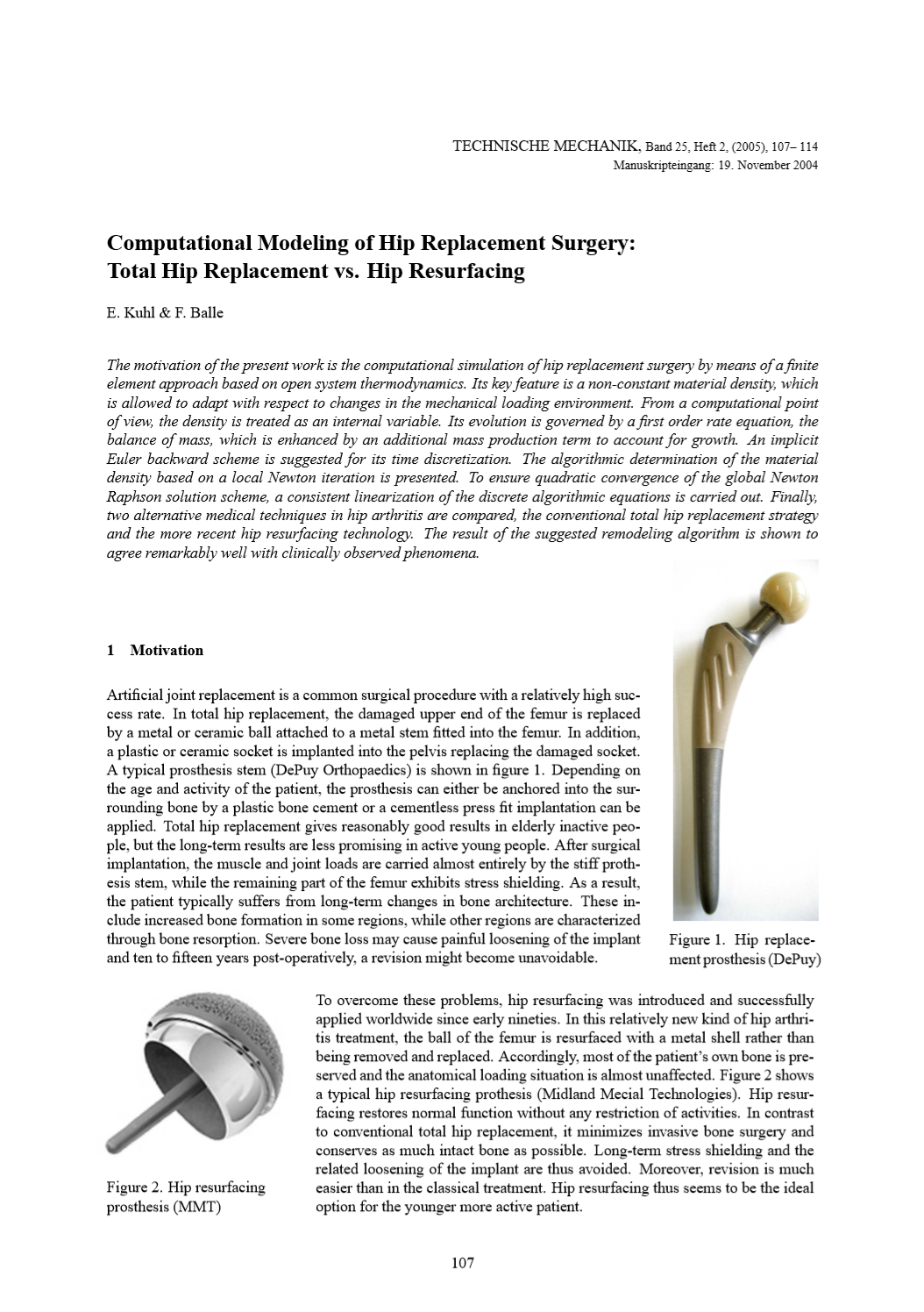Computational Modeling of Hip Replacement Surgery
Total Hip Replacement vs. Hip Resurfacing
Abstract
The motivation of the present work is the computational simulation of hip replacement surgery by means of a finite element approach based on open system thermodynamics. Its key feature is a non-constant material density, which is allowed to adapt with respect to changes in the mechanical loading environment. From a computational point of view, the density is treated as an internal variable. Its evolution is governed by a first order rate equation, the balance of mass, which is enhanced by an additional mass production term to account for growth. An implicit Euler backward scheme is suggested for its time discretization. The algorithmic determination of the material density based on a local Newton iteration is presented. To ensure quadratic convergence of the global Newton Raphson solution scheme, a consistent linearization of the discrete algorithmic equations is carried out. Finally, two alternative medical techniques in hip arthritis are compared, the conventional total hip replacement strategy and the more recent hip resurfacing technology. The result of the suggested remodeling algorithm is shown to agree remarkably well with clinically observed phenomena.





